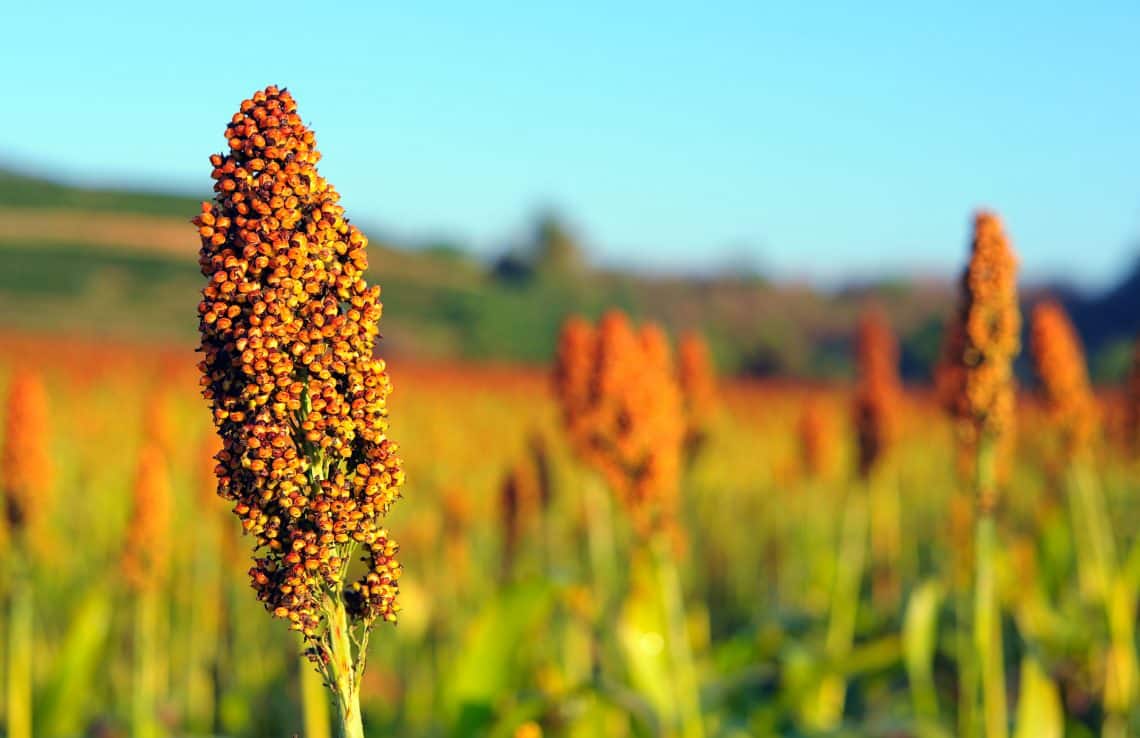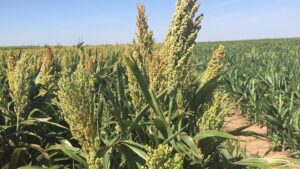Findings from an Iowa State University research team challenge previous understanding of the genetic control of traits associated with a “smart canopy” in sorghum.
Leaf angle has been an important trait manipulated to enhance yield for corn and some other crops. Plants with leaves upright at the top and more horizontal toward the bottom are idealized as having a “smart canopy” leaf arrangement, predicted to intercept more light, boost photosynthesis and increase yields.
This approach has not been a focus for improving sorghum, an important cereal crop worldwide for grain and forage production with potential as a bioenergy feedstock. The new research from Iowa State, studying sorghum leaf angle patterns and their underlying genetics and physiology, sheds light on opportunities to increase sorghum production. The findings were published recently in the peer-reviewed journal, Plant Physiology.
Maria Salas-Fernendez, associate professor of agronomy at Iowa State, is the senior author on the report. Co-authors are Maria Betsabe Mantilla-Perez, a former student in Salas-Fernandez’ lab, now working in private industry; Lie Tang, professor of agricultural and biosystems engineering; Yin Bao, formerly in agricultural and biosystems engineering, now an assistant professor at Auburn University; and Patrick S. Schnable, director of the Plant Sciences Institute and Iowa Corn Promotion Board Endowed Chair in Genetics and Baker Professorship in Agronomy. The study, built on the team’s previous research on sorghum, was funded by the USDA National Institute for Food and Agriculture and the Plant Sciences Institute.
“To expand sorghum’s potential as a crop outside of warmer regions where it is widely grown will require improvements in productivity over a range of conditions,” Salas-Fernandez says.
Such improvements could include developing smart canopy varieties, with leaf arrangements that could improve photosynthesis. With this as a long-term goal, her research team set out to discover more about leaf arrangement in sorghum and which genes might be modified to optimize this trait.
Past studies have largely assumed that genetic control of leaf angle is common throughout the plant, using the overall canopy or a single leaf as the unit of study. The Iowa State researchers tested this assumption by collecting leaf-angle data at three plant heights for hundreds of diverse sorghum lines. They used manual identification methods along with new, high-throughput phenotyping (HTP) that photographed and cataloged detailed, stereo images. The HTP system, devised by Tang’s lab, enabled 3D reconstruction of the canopy architecture under field conditions.
“This was a great test of our new HTP approach, which allows a level of analysis of plant structure that really hasn’t been available before,” Tang says. “It’s exciting to see how it can work to coordinate observations with quantitative genetics. In the future, deep-learning based visual technologies like this can be combined and further exploited to map spatial variation that reflect physiological processes.”
The team’s results revealed consistent patterns: leaf angles varied across plant layers and were controlled at each layer by unique genes and hormones. It turns out, in sorghum, the upper “flag” leaf is the most horizontal and angles increase from the middle to the upper canopy.
“This is actually opposite to the proposed smart canopy ideotype,” Salas- Fernandez says. “Our findings suggest we have an important opportunity to design and genetically manipulate individual layers to optimize sorghum’s leaf canopy for enhanced productivity.”
Source: Iowa State University











